
8 minute read
Protecting The Salt Of The Earth










William Vangool, Triodetic, Canada, explains how fertilizer storage facilities can be designed in order to counter the corrosive properties of potash.
t 13.3 million tpy, Canada is the largest producer of potash in the world, providing 32% of global consumption. It is interesting to reflect on the history of potash mining in Canada. Potash was first discovered in the province of Saskatchewan in the 1940s while drilling for oil. Active exploration of potash in the 1950s later found high grade potash layers. These deep layers were formed millions of years ago by the evaporation of an inland sea stretching across much of central and southern Saskatchewan. It is the largest commercial potash mining belt, comprising over 50% of all known world reserves. The high quality of grade measures on average 28% potassium oxide (K2O), compared to European averages of 19% K2O.






Figure 1. The interior view of a timber dome.
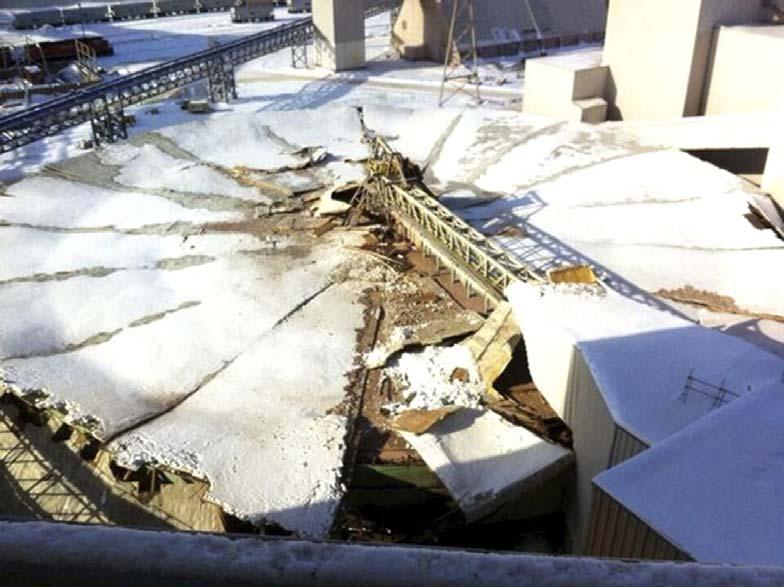
Figure 2. A collapsed timber dome.

Figure 3. A 73 m (239 ft) dia. steel dome during construction. The potash market is currently experiencing difficulties, and 2019 saw price-related fluctuations that extended well into 2020. High inventories have caused many potash mining operations to close or reduce production. This slowdown has affected capital investments. The demand for potash has also been affected by the weather; when farmers are not able to plant due to wet spring conditions the demand for fertilizer drops off significantly. Nevertheless, expectations are for a robust future demand for fertilizers in 2021 and beyond, in order to offset the effects of soil degradation and greenhouse gas emissions.
Potash process and corrosion
In Saskatchewan, potash is primarily mined using conventional methods. Large rotary mining machines cut tunnels into the ore body and leave salt pillars as supports for the extensive mining galleries. The ore is then crushed and processed through a complex flotation system. The addition of water to the crushed ore creates a highly corrosive mixture that readily corrodes piping, containment vessels, pumping machinery and structures housing the process equipment.
It is an ongoing challenge for engineers, designers and maintenance personnel to protect the process facilities from the devastating corrosive effects of the potash product during all phases of production.
Corrosion protection
Corrosion of metals leads to the deterioration and loss of material due to chemical, electrochemical and other reactions of the exposed surfaces. In addition to the systems carrying potash in flotation, the ambient air in a potash facility laden with moisture will also damage unprotected metal surfaces. Speciality metals, such as stainless steel, will extend the life of production equipment. Many coatings have been developed to act as barriers to resist metal deterioration; however, these coatings can be damaged and can lead to progressive spreading of corrosion. Loss of metal on structural supports or structural connections is known to have led to the collapse of entire structures.
Case study 1
In 2013, a timber dome collapsed at one of the Saskatchewan potash mines after many years of service due to corrosion of metal connections and steel rod bracing. Triodetic was asked to replace the timber dome. Resistance to corrosion was a primary concern; this mine has an operating capacity of 1.5 million tpy of potash and the loss of the thickener tank greatly impacted production.
Stainless steel 316L was selected for all components making up the dome structure, connection, cladding and fasteners.
The dome has a diameter of 73 m (239 ft), a height of 24 m (60 ft) and sits on 96 equidistant perimeter support points. Once the collapsed wood dome was cleared away a new perimeter footing was installed to support the stainless steel dome. The dome structure consists of stainless steel tubular components and stainless steel connectors.
The installation process does not require scaffolding, leaving the tank free of temporary construction supports or equipment. This allowed potash production to resume while assembly was taking place overhead. A net was stretched horizontally over the tank in the event that materials or tools accidentally dropped from above onto the mechanism or into the tank. Custom designed stairs are suspended from the interior of the dome to access the apex of the dome. The entire dome was covered with spray-on insulation.
Economic advantage of geodesic style domes
The main advantage of a single layer double-curved latticed framework is its lightness. Unlike linear conventional beam and column construction, domes derive their strength from curvature. Loads on the dome due to wind, snow and other factors are transferred into axial forces which follow the curvature of the dome by means of the triangular lattice work and are directed toward the base support points. It has been demonstrated that for similar structural spans, domes are two thirds lighter than conventional structures.
This is particularly advantageous from a cost point of view when dealing with stainless steel structural components. The Triodetic tubular components and connectors are made from stainless steel. The tubes vary in size from 64 mm (2 ½ in.) to 90 mm (3 ½ in.) in diameter with a fairly thin wall thickness of 4 mm (0.15 in.). Remarkably, these relatively small components are capable of spanning such large distances without interior supports.
Accuracy in fabrication is essential, as a 73 m (239 ft) dia. dome may have in the order of 6000 tubes with a minimum of 300 distinct lengths. The systematic assembly of these tubes needs to culminate at the apex in a dimensionally accurate triangulated closure.
Case study 2
An extensive expansion at the Agrium mine, now Nutrien near Saskatoon, Saskatchewan, required a dome cover for a flotation tank. The diameter is 45 m (146 ft) with a height of 19 m (63 ft). Once again, stainless steel 316L was selected to provide maximum corrosion protection. The dome is not a complete spherical segment; several large dormers radiate around the perimeter of the dome. These openings are primarily to accommodate a bridge truss
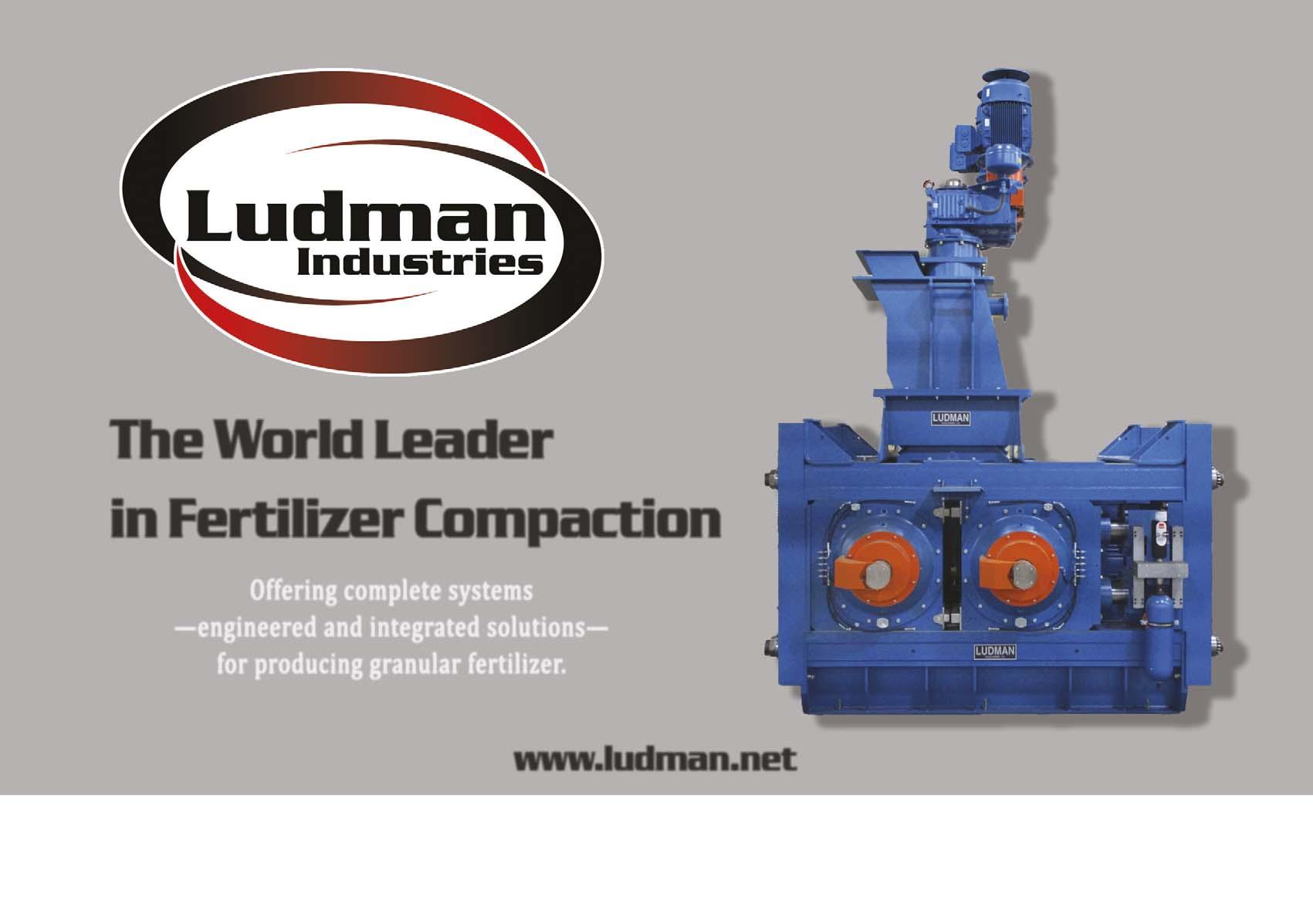



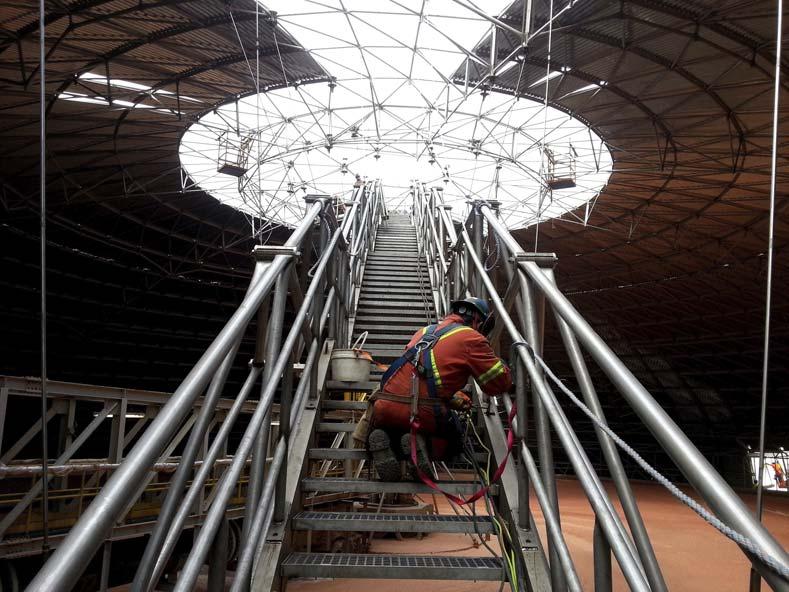
Figure 4. Stairs suspended from the dome for apex access.
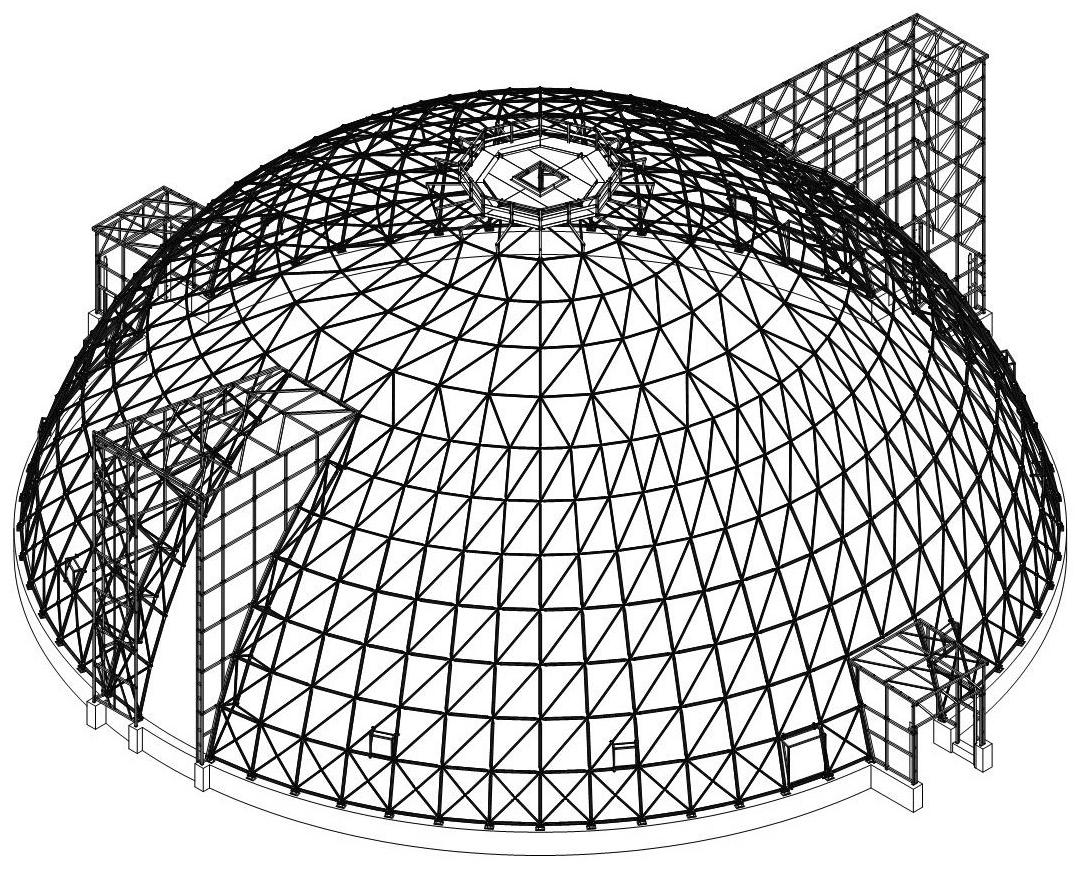
Figure 5. A 45 m (146 ft) dia. dome.
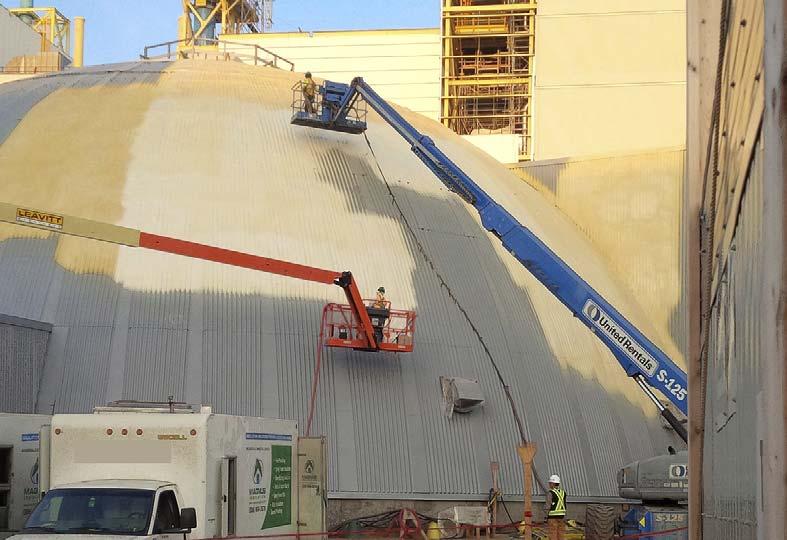
Figure 6. The application of spray-on insulation and top coat. frame which traverses the building to hold the centre rotating mechanism and pipe conduits. The dormer openings are 4 m (14 ft) wide and 14 m (45 ft) high. Having such major openings did complicate the installation of the skeleton frame, as the triangular elements are interrupted for an extensive height without fully completing the overall geometric pattern. Special tubular reinforcing around the openings ensured the integrity of the structure during assembly.
Pre-curved corrugated stainless steel metal decking covers the structure, followed by a 90 mm (3.5 in.) layer of spray-on insulation topped with a membrane.
Spray-on insulation and top coat
Winter temperatures in Saskatchewan can reach between -20˚C to -30˚C, meaning that it is imperative to insulate facilities housing potash process equipment. The dome structures are insulated with spray-on insulation, comprising a three layer system described below: The primer coat: Premicote 429 is a spray applied to the stainless steel substrate. It exhibits strong adhesion and is fast drying. The insulation layer: Bayseal 3.0 is a closed-cell polyurethane, applied in two layers with an approximate thickness of 45 mm (1.75 in.) for an overall thickness of 90 mm (3.5 in.). The nominal density of this product is 48 kg/m3 (3 lbs/ft3). The overall thickness will provide a R20 heat/cold resistance rating. Exterior membrane: Rhino Eco Coat is an ultra-violet (UV) resistant protective sealing membrane. This coating contains
UV stabilisers and has a UL 790 Class A rating. The required application thickness is 50 mils DFT (dry film thickness).
The above insulation system has had a strong performance record at potash production sites for many years.
Conclusion
With the rise in population there will be an increased demand for food. More food needs to be produced on less land, which will lead to an increased call for potash. Potash demand is expected to grow by 3 – 4% per year. This will undoubtedly require capital investments in mining expansion projects as well as new mining operations. In order to minimise the impact of corrosion and control maintenance costs, designers and engineers must ensure that production systems are designed for the long-term. The use of stainless steel, along with other proven durable coatings, will contribute to the longevity of mining operations.










